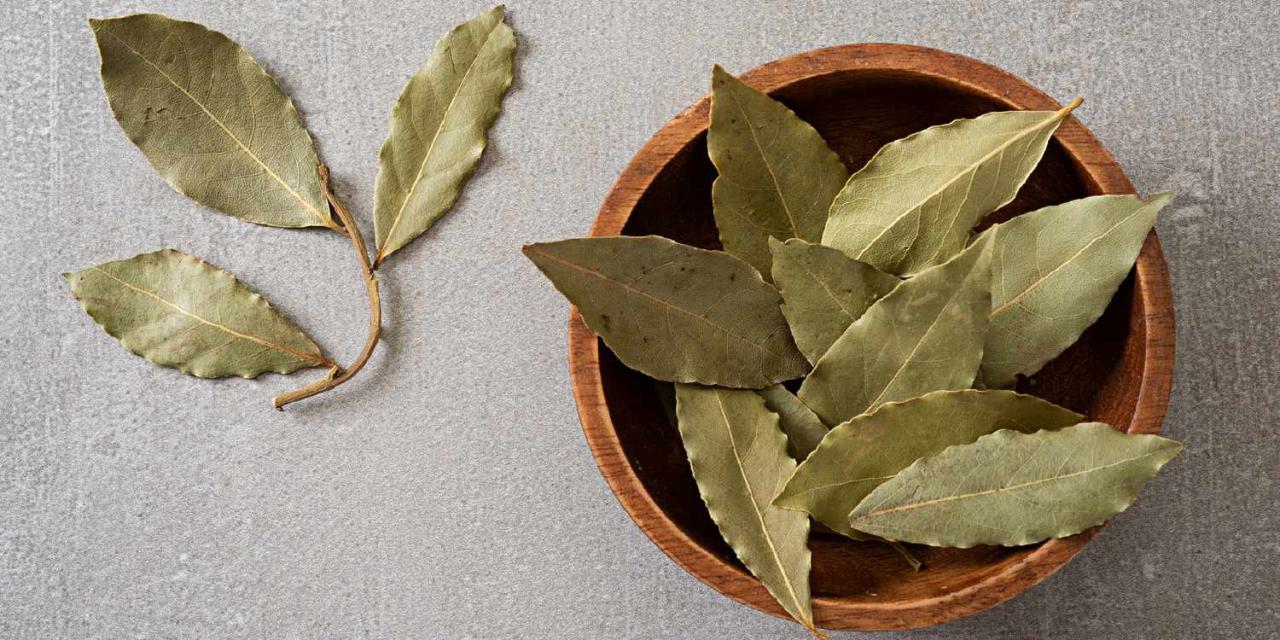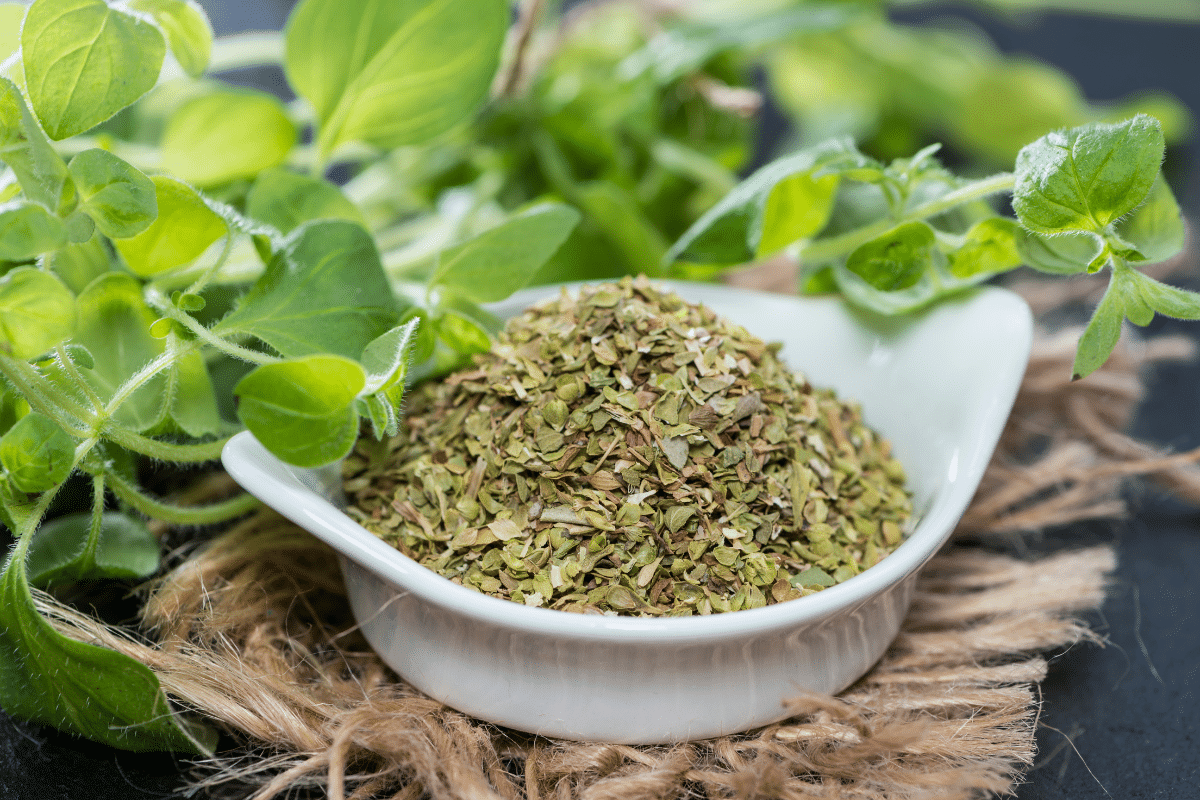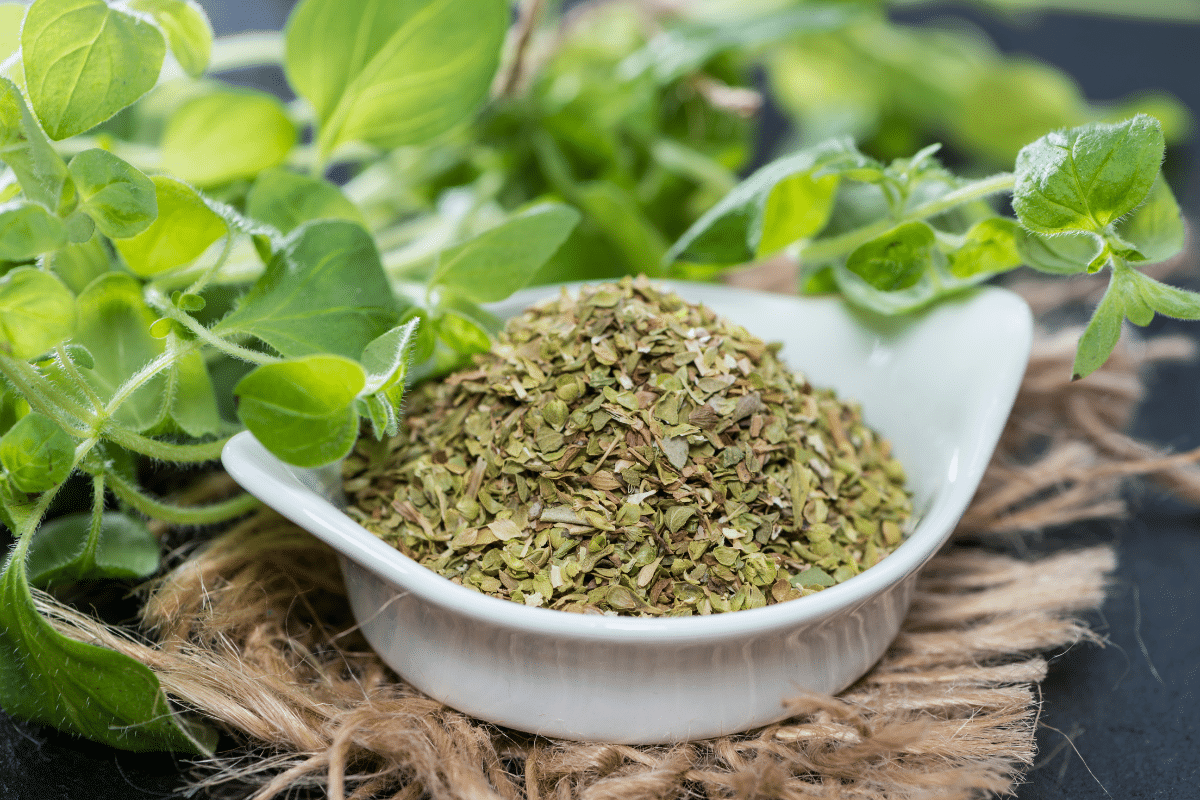The Ultimate List of Bay Leaf Alternatives You’ll Love: Bay leaves, with their earthy aroma and subtle bitterness, have long been a staple in kitchens worldwide. From hearty stews to aromatic sauces, their presence elevates countless dishes. But what if you find yourself without this culinary gem?
Fear not, for a world of flavorful alternatives awaits, each offering a unique twist to your cooking repertoire.
This comprehensive guide delves into the fascinating realm of bay leaf substitutes, exploring their distinct flavor profiles, culinary applications, and tips for incorporating them into your recipes. Whether you’re seeking a close match or a bold new flavor, this list will equip you with the knowledge to create culinary masterpieces even when bay leaves are unavailable.
Introduction
Bay leaves, the aromatic leaves of the bay laurel tree, are a culinary staple that has been used for centuries to enhance the flavor of dishes around the world. These leaves, with their distinctive earthy, slightly bitter, and slightly sweet flavor, add a unique depth and complexity to a wide variety of cuisines.
Their versatility and ability to complement diverse ingredients make them an essential ingredient in many culinary traditions.
Bay Leaves’ Flavor Profile and Aroma, The Ultimate List of Bay Leaf Alternatives You’ll Love
The flavor of bay leaves is characterized by its earthy, slightly bitter, and slightly sweet notes. This unique flavor profile is attributed to the presence of volatile oils, including cineole, eugenol, and linalool, which contribute to the leaves’ distinctive aroma and taste.
These compounds also possess antimicrobial and antioxidant properties, adding to the leaves’ culinary and medicinal value.
Uses of Bay Leaves in Cooking
Bay leaves are commonly used in various cuisines worldwide, adding their signature flavor to both savory and sweet dishes. They are particularly popular in Mediterranean, French, and Italian cooking, where they are often used in stews, soups, sauces, and braises.
While exploring alternative flavor profiles to bay leaves, you might also find yourself drawn to the symbolism of luck and prosperity. If so, why not add a touch of magic to your culinary journey by learning how to find and grow your own four-leaf clover?
Check out this comprehensive guide on How to Find and Grow Your Own Four Leaf Clover for Prosperity and infuse your kitchen with a touch of good fortune. Once you’ve mastered the art of clover cultivation, you’ll be ready to explore the diverse world of bay leaf alternatives and elevate your cooking to new heights.
The leaves are also used in marinades, rubs, and spice blends, enhancing the flavor of meats, poultry, and vegetables.
Flavor Profiles of Bay Leaf Alternatives
Bay leaves, with their earthy and slightly bitter notes, have long been a staple in culinary traditions around the world. However, sometimes, you might find yourself without a bay leaf or simply want to explore other flavor options. Fortunately, a variety of herbs and spices can effectively substitute for bay leaves, offering a range of flavor profiles to enhance your dishes.
Exploring the Flavor Profiles of Bay Leaf Substitutes
Understanding the unique flavor profiles of these substitutes is crucial for choosing the best option for your recipe. Here’s a closer look at some popular alternatives and their distinctive characteristics:
Substitute |
Flavor Profile |
Culinary Uses |
Notes |
|---|---|---|---|
Rosemary |
Woody, slightly bitter, with hints of pine and camphor |
Roasted meats, stews, soups, marinades |
Rosemary’s robust flavor can be overpowering, so use it sparingly. |
Thyme |
Earthy, slightly sweet, with a hint of lemon |
Chicken, fish, vegetables, sauces |
Thyme pairs well with a variety of ingredients and adds a subtle, savory depth. |
Sage |
Earthy, slightly bitter, with a hint of mint |
Stuffings, poultry, sausages, pasta dishes |
Sage’s strong flavor can be overpowering, so use it in moderation. |
Marjoram |
Slightly sweet, earthy, with a hint of oregano |
Soups, stews, tomato sauces, vegetables |
Marjoram’s delicate flavor blends well with other herbs and spices. |
Oregano |
Slightly bitter, pungent, with a hint of citrus |
Tomato sauces, pizzas, Italian dishes |
Oregano’s bold flavor adds a distinct, earthy touch to Mediterranean cuisine. |
Tarragon |
Slightly sweet, anise-like, with a hint of licorice |
Chicken, fish, egg dishes, sauces |
Tarragon’s delicate flavor adds a unique complexity to dishes. |
Dried Basil |
Sweet, slightly peppery, with a hint of mint |
Tomato sauces, Italian dishes, soups |
Dried basil provides a more concentrated flavor than fresh basil. |
Bay Leaf Alternatives for Specific Dishes

While bay leaves are a staple in many cuisines, finding a suitable substitute can be essential when you’re out of them or prefer a different flavor profile. The ideal replacement will depend on the specific dish you’re preparing, considering factors like the desired intensity, aroma, and overall flavor balance.
While searching for unique flavor profiles, you might stumble upon the intriguing world of culinary herbs. If you’re looking for a lucky charm in your kitchen, you can try exploring the world of four-leaf clovers, which are believed to bring good fortune.
Learn about the best techniques for finding and cultivating these rare treasures in your garden with this comprehensive guide: The Best Techniques for Finding and Cultivating Four Leaf Clovers. Once you’ve mastered the art of finding four-leaf clovers, you can return to the world of culinary herbs and discover the best bay leaf alternatives to elevate your dishes.
Soups and Stews
Bay leaves are commonly used in soups and stews to add depth and complexity. Their earthy, slightly bitter notes blend well with hearty ingredients like vegetables, meat, and beans. When substituting for bay leaves in these dishes, consider the following options:
- Thyme:Thyme offers a similar earthy aroma and slightly peppery flavor, complementing rich stews and hearty vegetable soups. It’s particularly well-suited for dishes featuring root vegetables like carrots, potatoes, and turnips.
- Rosemary:Rosemary adds a distinct, slightly piney and herbaceous flavor that works well in hearty stews and soups with a Mediterranean flair. It complements dishes with lamb, beef, or poultry.
- Sage:Sage has a strong, slightly bitter and earthy flavor that complements hearty soups and stews with a rustic touch. It’s a good choice for dishes featuring mushrooms, beans, or pork.
Sauces
Bay leaves are often used in sauces to add a subtle complexity and depth of flavor. Their versatility allows them to work well with a variety of ingredients, from tomato-based sauces to creamy reductions. When substituting for bay leaves in sauces, consider these options:
- Marjoram:Marjoram has a mild, slightly sweet flavor that complements tomato-based sauces, especially those with a Mediterranean twist. It works well with dishes like spaghetti sauce or marinara.
- Oregano:Oregano offers a slightly bitter, earthy flavor that adds depth to tomato-based sauces, especially those with a spicy kick. It’s a good choice for dishes like pizza sauce or chili.
- Parsley:Parsley adds a fresh, slightly peppery flavor that complements creamy sauces, especially those featuring seafood or chicken. It’s a good choice for dishes like Alfredo sauce or lemon butter sauce.
Marinades
Bay leaves are sometimes used in marinades to add a subtle complexity and depth of flavor to meats and poultry. Their earthy, slightly bitter notes complement the savory flavors of the marinade, creating a more complex and nuanced taste. When substituting for bay leaves in marinades, consider these options:
- Tarragon:Tarragon offers a distinct, slightly anise-like flavor that complements marinades for chicken, fish, or lamb. It adds a touch of sophistication and complexity to the marinade.
- Lavender:Lavender has a floral, slightly sweet flavor that complements marinades for poultry or lamb, adding a touch of elegance and refinement. It’s particularly well-suited for dishes with a Mediterranean flair.
- Garlic:Garlic adds a pungent, savory flavor that complements marinades for beef, pork, or lamb. It’s a good choice for dishes with a strong, bold flavor.
Tips for Using Bay Leaf Alternatives

Bay leaf alternatives offer a wide range of flavors and aromas, but using them effectively requires some understanding of their unique characteristics. Here are some tips to ensure you get the most out of these substitutes:
Quantity and Proportion
The quantity of bay leaf alternative used will vary depending on the specific ingredient and the recipe. Generally, you’ll need a slightly larger amount of the substitute than you would a bay leaf. Here are some general guidelines:
- Dried Herbs:Start with 1/2 to 1 teaspoon of dried herbs for every bay leaf. For stronger herbs like rosemary or thyme, use the lower end of the range. For milder herbs like parsley or oregano, use the higher end.
- Fresh Herbs:Use 1 to 2 tablespoons of fresh herbs for every bay leaf. Adjust the amount based on the herb’s strength. For example, use less fresh rosemary than fresh parsley.
- Spices:Start with 1/4 to 1/2 teaspoon of ground spices for every bay leaf. Adjust the amount based on the spice’s intensity. For example, use less ground cloves than ground cinnamon.
Incorporating Alternatives
The best way to incorporate bay leaf alternatives depends on the type of ingredient and the recipe. Here are some suggestions:
- Dried Herbs:Add dried herbs early in the cooking process to allow their flavors to infuse the dish. You can add them directly to the pot or tie them in a cheesecloth bag for easy removal.
- Fresh Herbs:Add fresh herbs towards the end of cooking to preserve their vibrant flavors. You can add them directly to the pot or stir them in during the last few minutes.
- Spices:Add spices early in the cooking process to allow their flavors to develop. You can add them directly to the pot or toast them lightly in a dry pan before adding them to the dish.
Adjusting Cooking Times
Some bay leaf alternatives require different cooking times than bay leaves. Here are some general guidelines:
- Dried Herbs:Dried herbs generally require longer cooking times than bay leaves to release their flavors. Add them early in the cooking process and allow them to simmer for at least 15 minutes.
- Fresh Herbs:Fresh herbs require shorter cooking times than bay leaves. Add them towards the end of cooking to preserve their vibrant flavors.
- Spices:Spices generally require longer cooking times than bay leaves to develop their flavors. Add them early in the cooking process and allow them to simmer for at least 10 minutes.
Additional Considerations
When choosing a bay leaf alternative, it’s important to consider factors beyond just flavor. Availability, cost, and potential health effects can all play a role in your decision.
Availability and Cost
The availability and cost of bay leaf alternatives can vary depending on your location and the specific ingredient.
- Common Herbs:Herbs like thyme, rosemary, and oregano are readily available in most grocery stores and are generally affordable.
- Specialty Herbs:Herbs like tarragon, marjoram, and sage can be harder to find in some areas, and may be slightly more expensive.
- Dried Spices:Spices like cloves, cinnamon, and allspice are widely available and typically inexpensive.
- Citrus Zest:Lemon, orange, and lime zest can be easily found, and the cost depends on the type of citrus fruit.
Health Benefits and Drawbacks
While bay leaf alternatives generally offer similar flavor profiles, some may have unique health benefits or drawbacks.
- Thyme:Known for its antibacterial and antifungal properties, thyme can be beneficial for immune support.
- Rosemary:Rich in antioxidants, rosemary may improve memory and cognitive function.
- Oregano:Oregano contains potent antioxidants and may have anti-inflammatory properties.
- Cinnamon:Cinnamon can help regulate blood sugar levels and may have anti-inflammatory effects.
- Citrus Zest:Citrus zest is a good source of vitamin C, which is essential for immune function.
Experimentation and Personal Preference
Ultimately, the best bay leaf alternative for you will depend on your individual taste preferences and the specific dish you’re preparing. Don’t be afraid to experiment with different combinations and find what works best for you.
Final Summary: The Ultimate List Of Bay Leaf Alternatives You’ll Love
The journey through the world of bay leaf alternatives reveals a tapestry of flavors, each adding a unique dimension to your culinary creations. From the subtle notes of thyme to the bold punch of rosemary, these substitutes offer a chance to explore new taste horizons and elevate your cooking to new heights.
Remember, experimentation is key. Embrace the adventure of discovering your favorite bay leaf alternatives and let your culinary creativity soar.
Question & Answer Hub
What are some common reasons why people might need to find bay leaf alternatives?
People might need to find bay leaf alternatives due to allergies, unavailability, or simply wanting to explore different flavor profiles.
Can I use fresh herbs instead of dried bay leaf substitutes?
Yes, fresh herbs can be used as substitutes. However, adjust the quantities as fresh herbs are more potent than dried ones.
How do I store bay leaf alternatives?
Store dried herbs in airtight containers in a cool, dark place. Fresh herbs should be stored in the refrigerator or used promptly.
